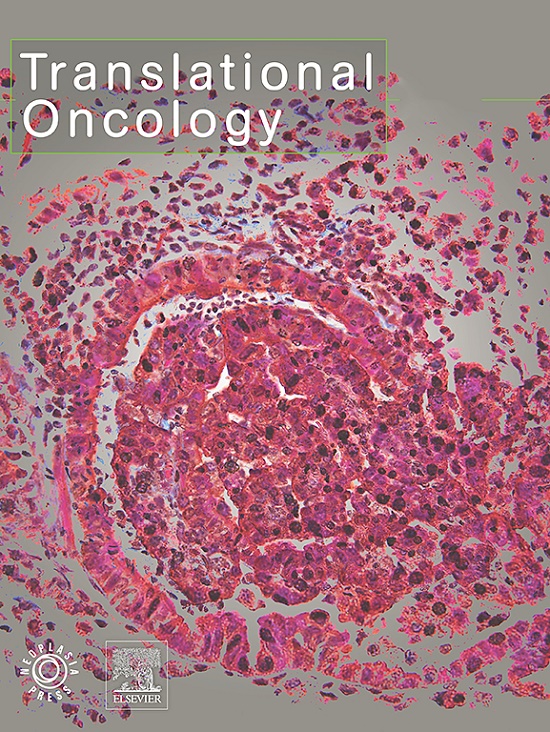敲低TNF家族预后指标关键基因PDE4B促进卵巢癌细胞PANoptosis:基于体外和体内实验
IF 5
2区 医学
Q2 Medicine
引用次数: 0
摘要
卵巢癌是一种发病率高、死亡率高的恶性肿瘤,有必要进一步阐明其潜在机制。我们使用卵巢癌和正常卵巢组织的大量转录组数据以及根据公开数据库的单细胞测序数据进行了分析。通过计算TNF家族基因的基因集变异分析(GSVA)评分,加权基因共表达网络分析(WGCNA)用于中心基因鉴定,以及随后的基因本体(GO)富集分析,我们描绘了卵巢癌发病机制的关键途径。此外,差异表达基因分析有助于鉴定肿瘤组织中显著表达水平的基因及其与枢纽基因的交集,随后进行分子功能(MF)、细胞成分(CC)和生物过程(BP)的氧化石墨烯分析。利用多变量Cox回归和LASSO分析,我们构建了包含14个基因(GFPT2、PDE4B、PODNL1、TGFBI、CSF1R、PTGIS、SFRP2、COL5A2、TRAC、SLAMF7、VCAN、GBP1P1、C2、TRBV28)的预后模型。训练集和验证集都显示出强大的诊断和预后能力。在此基础上进一步进行临床资料和免疫细胞浸润分析。在单细胞测序分析中,进行了降低维数复杂性和细胞类型分类,随后探索了每个亚型内的基因表达模式,并研究了细胞亚型间的时间表达变化。并进行了生物功能探索和药敏分析。我们的研究为患者的预后、治疗和药物开发提供了新的见解和理论基础。本文章由计算机程序翻译,如有差异,请以英文原文为准。

Knockdown TNF family prognosis index crucial gene PDE4B promoted PANoptosis of ovarian carcinoma cell:Based in vitro and in vivo experiments
Ovarian cancer represents a malignancy characterized by high incidence and mortality rates, necessitating further elucidation of its underlying mechanisms. We conducted an analysis using bulk transcriptomic data of ovarian cancer and normal ovarian tissues, as well as single-cell sequencing data according to publicly available databases. Through calculation of Gene Set Variation Analysis (GSVA) scores for TNF family genes, weighted gene co-expression network analysis (WGCNA) for hub genes identification, and subsequent Gene Ontology (GO) enrichment analysis, we delineated pathways crucial in ovarian cancer pathogenesis. Furthermore, differential expression gene analysis facilitated the identification of genes with pronounced expression levels in tumor tissues and their intersection with hub genes, followed by GO analyses across molecular functions (MF), cellular components (CC), and biological processes (BP). Utilizing multivariable Cox regression and LASSO analyses, we constructed a prognostic model comprising 14 genes (GFPT2, PDE4B, PODNL1, TGFBI, CSF1R, PTGIS, SFRP2, COL5A2, TRAC, SLAMF7, VCAN, GBP1P1, C2, TRBV28). Both training and validation sets demonstrated robust diagnostic and prognostic capabilities. Clinical information and immune cell infiltration analyses were further conducted based on the model. In the single-cell sequencing analysis, reducing dimensional complexity and classifying cell types were performed, followed by exploration of gene expression patterns within each subtype and investigation of temporal expression variations across cell subtypes. Biological functional exploration and drug sensitivity analyses were also conducted. Our study contributes novel insights and theoretical foundations for prognosis, treatment, and development of drugs in patients.
求助全文
通过发布文献求助,成功后即可免费获取论文全文。
去求助
来源期刊

Translational Oncology
ONCOLOGY-
CiteScore
8.40
自引率
2.00%
发文量
314
审稿时长
54 days
期刊介绍:
Translational Oncology publishes the results of novel research investigations which bridge the laboratory and clinical settings including risk assessment, cellular and molecular characterization, prevention, detection, diagnosis and treatment of human cancers with the overall goal of improving the clinical care of oncology patients. Translational Oncology will publish laboratory studies of novel therapeutic interventions as well as clinical trials which evaluate new treatment paradigms for cancer. Peer reviewed manuscript types include Original Reports, Reviews and Editorials.
 求助内容:
求助内容: 应助结果提醒方式:
应助结果提醒方式:


